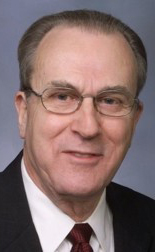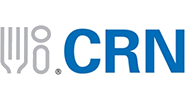 John was a prolific author of peer-reviewed, published scientific articles. It’s hard to know for sure, since there are other “J Hathcock” authors, but my estimate is close to 100 peer-reviewed articles in PubMed. Many of them, of course, focused on his passion: Use of risk assessment to establish science-based maximums for nutrients (and bioactives). Between 2006 and 2013, John and I were coauthors on 10 publications, mostly focused on risk assessment. I was never more productive in terms of publishing then during that time when I worked with John. He was the master mentor, and I was the eager student, and I believe we formed the most prolific tandem CRN—or any other supplement association—has ever or will ever experience. Our work is still to this day referenced by companies and governments and served as the basis of many IADSA documents and guidelines used throughout the world.
John was a prolific author of peer-reviewed, published scientific articles. It’s hard to know for sure, since there are other “J Hathcock” authors, but my estimate is close to 100 peer-reviewed articles in PubMed. Many of them, of course, focused on his passion: Use of risk assessment to establish science-based maximums for nutrients (and bioactives). Between 2006 and 2013, John and I were coauthors on 10 publications, mostly focused on risk assessment. I was never more productive in terms of publishing then during that time when I worked with John. He was the master mentor, and I was the eager student, and I believe we formed the most prolific tandem CRN—or any other supplement association—has ever or will ever experience. Our work is still to this day referenced by companies and governments and served as the basis of many IADSA documents and guidelines used throughout the world.
Hathcock's Observed Safe Level method now recognized by WHO
John’s concept he called “Observed Safe Level"—or OSL—was revolutionary and preceded any formal recognition by many years. John first came up with the term when authoring CRN’s first edition of the Vitamin & Mineral Safety Book. It was meant to address those nutrients for which there was ample safety data, but for which no Upper Level (UL) could be derived.
For some nutrients, without a hazard, or, identification of an adverse effect, by definition, no UL could be derived. The absence of a UL for nutrients like vitamin B12 was misconstrued by some governments as lack of safety data—and license to apply the precautionary principle, setting maximums based on RDA multiples. But B12 has lots of safety data, just no toxicity. So rather than having no UL (or no number), John proposed the “OSL”—a value representative of studies that had been conducted on a nutrient for which no toxicity had been observed.
Other governments followed this (for example, the UK with a B12 “guidance level”) and in 2006, the World Health Organization (WHO) formally recognized this approach but used a different term: “Highest Observed Intake”—or HOI. Although John was clearly the pioneer of this approach, he never received formal recognition or credit from any government body or organization for this. Still, being John, he was never concerned with getting credit, he only cared that folks finally got it right. Now governments all over the world use this approach.
In addition to its use for policymaking with nutrients, the OSL/HOI approach is being applied to bioactives, as well, following some additional efforts of ours. Similar to B12, many bioactives have been studied at high doses, but no toxicity has been observed in humans so a UL cannot be established.
I’m so proud to have had the opportunity to work with and be mentored by John.
 Andrew Shao, Ph.D.
Andrew Shao, Ph.D.
Interim Senior Vice President, Scientific & Regulatory Affairs
CRN
APRIL 30, 2019

